The 1980s saw the release of a number of toys and animated films, but some stood out more than others. In 1984, Hasbro released the Transformers toy line and television series, which immediately rose to the top of the toy sales charts.
Transformers served as the inspiration for a 1986 animated movie, several other toy lines, and a number of live-action movies. The transformers were the whole thing. This was the pinnacle of toy and TV franchises for many young kids growing up in the 1980s. G.I. Joe came in second place, but Transformers captured kids’ imaginations unlike anything else.
No other toy has been able to capture and amaze kids in the same way. More than any other form of media, The Transformers, a classic original American-Japanese animated series that ran from 1984 to 1987, captured the attention of adults who were once children as well as other children-at-heart around the world in the early 1980s. When Transformers: The Movie was released in 1986, it had a profound impact on an entire generation and also led to great heartache.
What The Cartoon Television Series Is All About
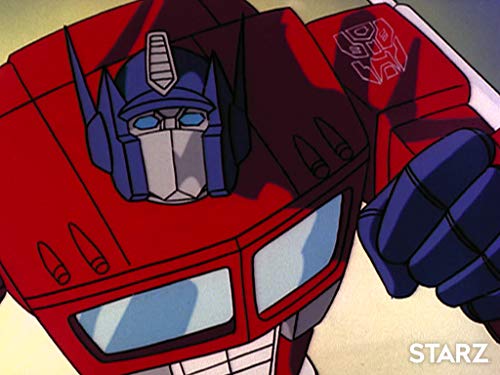
Based on Hasbro’s Transformers toy line, The Transformers is an American animated television series that ran in syndication from September 17, 1984, until November 11, 1987. The first television programme in the Transformers franchise, it features a conflict between enormous robots that can transform into vehicles and other objects. The series was produced for first-run syndication by Sunbow Productions, Marvel Productions, and Toei Animation, a Japanese animation studio. Toei served as the primary animation studio and co-produced the show for the first two seasons.
In the third season, Toei’s involvement with the production team was reduced, and the animation work was divided between Tokyo Movie Shinsha, which is now known as TMS Entertainment, and the South Korean animation company AKOM. The creator of AKOM is Nelson Shin, the supervising producer of the show. For the fourth season, AKOM handled all of the animation. The Transformers: The Movie, which was a well-known feature picture released in 1986, served as a companion to the second and third seasons.
The term “Generation 1” is frequently used to refer to this series. Fans first coined the term when the franchise changed its name to Transformers: Generation 2 in 1992, and it eventually entered official usage. The Hub, now known as Discover Family, and the Sci-Fi Channel later showed reruns of the series.
The Transformers toy line and animated series were both inspired by Takara’s Microman, an Eastern take on the G.I. Joe 12 inch action figure series. A 1980 Microman spin-off called Diaclone featured inch-tall lifelike figurines that could sit in the drivers’ seats of scale model cars that could transform into humanoid robot bodies that the drivers controlled.
Later, in 1983, a MicroChange sub-line of the character with “actual size” objects that transformed into bots, such as microcassettes, weapons, and toy cars, was introduced. Henry Orenstein, a product researcher for the Hasbro toy company, later discovered MicroChange and Diaclone toys at the Tokyo Toy Fair in 1983. He then pitched the concept to Hasbro’s head of R&D, George Dunsay.
By 1984, numerous prohibitions on the inclusion of promotional information inside children’s television programs had been lifted by US authorities. The way had been cleared for the brand new product-focused television show. Hasbro previously collaborated with Marvel Comics to create G.I. Joe: A Real American Hero for just a three-pronged marketing campaign that included the toyline, a Marvel Comics tie-in comic book, and a cartoon mini-series co-produced by Marvel Productions and the Sunbow Productions of the Griffin-Bacal Advertising Agency production house. Given the success of that approach, Hasbro vice president of marketing Bob Prupis approached Marvel in 1984 about developing their new robot series, called “Transformers” by Jay Bacal.
Editor-in-Chief of Marvel Jim Shooter, at the time, created a basic plot premise for the series, imagining two warring sides of alien robots – the noble Autobots and the villainous Decepticons. To further develop his vision, Shooter enlisted experienced editor Dennis O’Neill to generate character names and descriptions for the ensemble, but O’Neill’s work fell short of Hasbro’s standards, and they demanded extensive alterations.
O’Neill refused to make the requested adjustments, and the venture was turned down by numerous authors and editors contacted by Shooter until eventually editor Bob Budiansky agreed to take on the assignment. Budiansky’s new identities and profiles were a success with Hasbro, and work on a bi-monthly comic book short series with four issues and three-part television pilot began over the weekend.
Both the comic and the show would end up running for years after these modest beginnings, utilizing Budiansky’s original concept work as a foundation to tell the tale of the Transformers in multiple different ways, producing two unique, unrelated elements of continuity for the franchise out of the gate.
Shhei Kohara, a Japanese designer, was responsible for developing the first character designs for the Transformers crew, substantially humanizing the toy designs to produce more accessible robot avatars for the comic and animation. His drawings were later refined by Floro Dery, who went on to become the series’ primary designer, generating many more designs and concepts in the future.
To most, The Transformers animation was little more than a fancy TV pitch for children’s toys. While there is some truth to it, the show’s writers decided to include a few emotional scenes for the sake of effective entertainment. The Season 1 segment “Fire In The Sky,” which featured the reappearance of a long-lost Transformer called Skyfire, a former buddy of Starscream who is misled into joining the Decepticons, was one of the first to tug at the heartstrings. Skyfire, seeing their betrayal, attacks Megatron and Starscream, inciting their anger. Finally, he volunteers himself as tribute to rescue the Earth before becoming buried behind a mass of ice and snow, destroying both Spike and the Autobots.
Bumblebee and Spike were knocked out after a fight with the Decepticons in Season 2 in the episode”Autobot Spike,” putting Spike’s life in peril. Spike’s mind was transplanted out of his damaged human body and into the body of an Autobot made from leftover components as a last ditch effort. Spike was traumatized by the mind transfer, which caused him to lash out and have destructive ideas. The episode depicted the anguish his dad Sparkplug went through.
Omega Supreme’s terrible narrative cannot be exaggerated. Omega Supreme, formerly a close associate of the Constructicons, was charged with protecting Cybertron’s gleaming Crystal City in the early years of the war.
Omega Supreme was finally betrayed by the Constructicons. In the Season 2 segment “The Girl Who Loved Powerglide,” inter-species relationships took on a whole new meaning. Megatron targets an orphan young woman called Astoria for an energy compound produced by her deceased father, causing Powerglide to assist and save her.
He quickly becomes the object of her desires, initially rejecting them until changing his mind at the conclusion of the segment. “The Killing Jar,” the Season 3 episode, was a particularly contemplative and educational one, demonstrating how animosity and distrust may threaten to ruin both sides of a battle. The narrative centers upon Ultra Magnus, Wreck-Gar, Cyclonus and Marissa Faireborn, who are kidnapped by a Quintesson researcher in order to do tests on them. When the entire group is endangered by the existence of a black hole, things go wrong.
With little sympathy between opposing factions, combat quickly erupts, threatening to murder them all until they come up with a way out of their dilemma. The episode concludes with a gloomy message for the present. The entire show is filled with many such emotional episodes, making it extremely memorable for everyone who has ever watched it.
Main Characters of the cartoon series
Optimus Prime
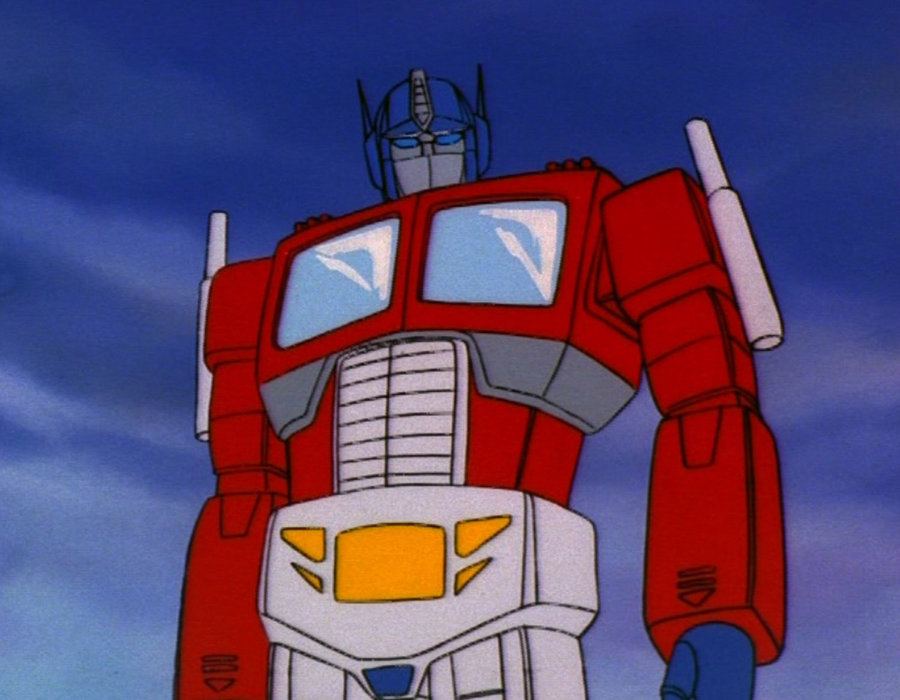
Optimus Prime is indeed the Autobot troops’ awe-inspiring, strong, and caring commander. Originally a working-class human, he was selected by the Matrix to lead the Autobots, which was only the first of many hardships he would have to carry, one of which being his unintended migration of the Transformers’ centuries long struggle to Earth. He is the polar antithesis of his mortal nemesis Megatron in terms of morality; each casualty, Cybertronian or human, military or civilian, weighs hard on his spark. He does not publicly express these sentiments to his fellow Autobots, though, and occasionally approaches despair. He thinks that “freedom is the right of all sentient beings” and has fought the bellicose Decepticons for thousands of years.
In robot form, Optimus Prime divides into three parts:
The Brain Center is a sentient robot module.
Roller is a wheeled drone module.
A Combat Deck.
Although Optimus Prime may function as three separate modules, any damage to one module affects the others.
Ultra Magnus
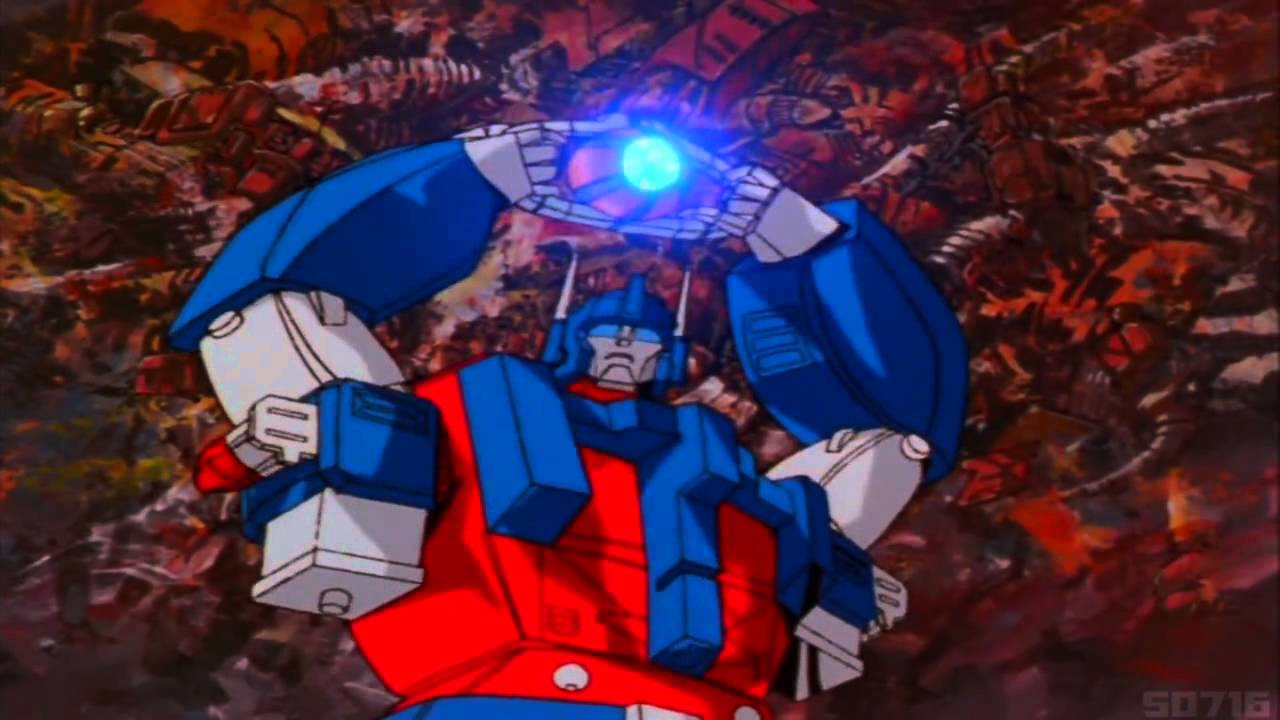
Ultra Magnus considers himself to be nothing more than a soldier. He likes to take commands rather than offer them, and he even avoids chances for more responsibility. However, when forced into certain situations, he demonstrates that he is not only a great soldier, but also a capable leader and a companion of any other leader, such as Rodimus Prime.
He’s strong, steadfast, dependable, unselfish, and brave. Unfortunately, Ultra Magnus seems to be the only Autobot commander who is unaware of this. Ultra Magnus, who believes he is nothing more than a soldier, is completely prepared to sacrifice everything for the common good if necessary. He is aware that he is more strong than the usual Autobot and will attack greater dangers appropriately.
Megatron
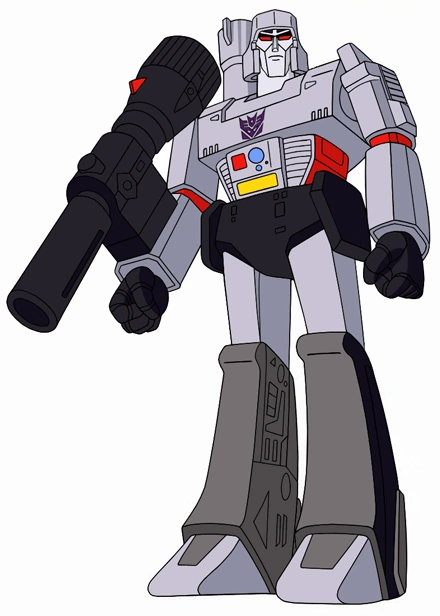
Megatron is a very well respected and feared commander of the Decepticon revolt. As a youthful, charismatic leader molded in conflict and the tradition of war, he started to believe in a noble purpose for his species; it is the magnificent destiny of the Transformers to govern an empire that will encompass the universe. He has enormous hatred for the rest of the Transformers who, according to him, betray his proud lineage by wanting peace and collaboration with inferior living forms, the polar opposite of his sworn rival Optimus Prime.
The Decepticons’ destiny is to deliver order in the universe via conquest, yet it remains to be determined how much of his vision and mission is benevolent… and how much is simply rhetoric designed to motivate soldiers in order to promote his goal for personal domination. Megatron will do practically anything to attain his objectives, but his tactics are rarely subtle. This might be due to his hubris, yet his arrogance is not powerful enough to prevent him from quitting a losing war.
Galvatron
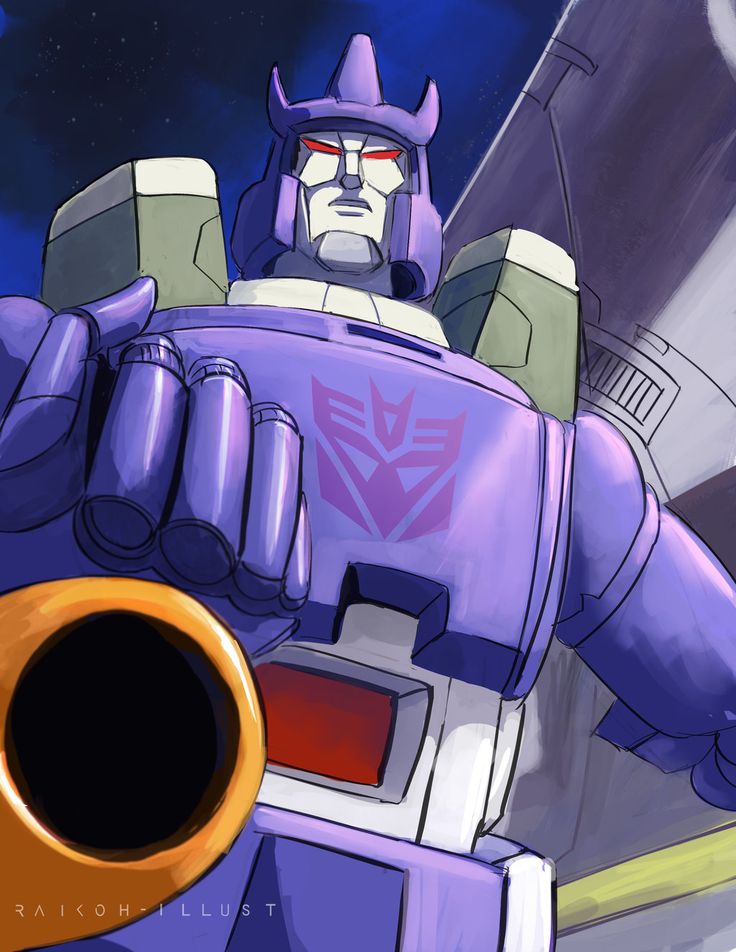
Galvatron is a true force of nature. He is a central focus of might and madness given shape as a result of Unicron’s manipulations. Galvatron is oblivious to everything save his hunger for power, and his fancies and wishes can be abandoned in a fit of wrath. Even his own colleagues are not immune. Though Galvatron is capable of long-term objectives, it is his volatility and cavalier contempt for all life that frightens both allies and enemies alike. That Decepticon commander is truly devoid of empathy.
Galvatron was formerly Megatron, but in a Faustian deal with Unicron, he was recreated from his dying throes. He maintains Megatron’s memories and spark, but his demeanor has been considerably altered as a result of the near-death experience, enormous physical upgrade, and retraining. That was all before he went crazy. The reason and amount of Galvatron’s insanity, as well as his physical power, varied between continuities. He is sometimes portrayed as nearly invincible.
Shockwave
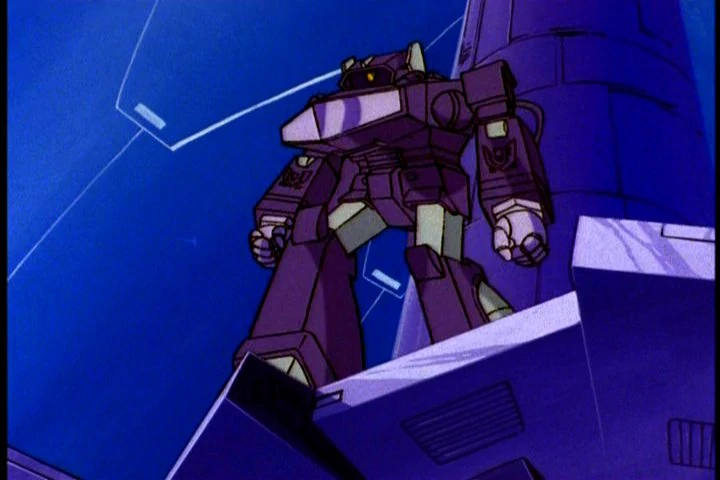
Shockwave, also known as N-4-SR, has been described to be “a computer on legs.” This really is not far off the mark. Shockwave’s cognitive processes are governed by logic, and it is the foundation of all his inspiration. He regards feelings as a flaw and a distraction. His terrifying and incredibly strong physique adds to his cold and calculated demeanor. Shockwave may be more formidable than Megatron, toward whom he seems to be devoted. Perhaps rationality will one day suggest that the moment has come to replace Megatron’s misguided, emotion-fueled reign. After all, Shockwave is the only obvious candidate for Decepticon commander.
Elita One
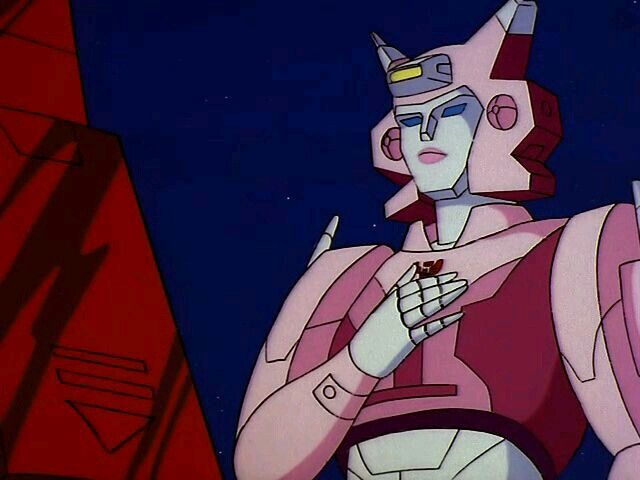
Elita One, commonly known by the name Elita Monon and formerly E1, is Optimus Prime’s female counterpart; a brave fighter who is empathetic to those that cannot protect themselves. She leads a team of Female Autobots and has their complete trust and support. While her gun is strong enough to knock Shockwave out from the sky in one bullet, her greatest talent is the ability to temporarily pause time. Unfortunately, this talent takes the entirety of her life energy and is almost always deadly, so she only utilizes it in the most desperate of circumstances. When necessary, she consults the knowledgeable Alpha Trion via holographic messaging machine. The fact that Alpha Trion is actually her maker, is not known to her.
Chromia

Chromia is actually a soldier under Elita One’s leadership who appears to act as her second-in-command, directing the remainder of the squad while Elita is not there. She’s courageous, tough as nails, and, predictably, in a romance with Ironhide. She also has taken over as Flareup’s tutor from Firestar, who proved to be more suited to more offensive-oriented activities.
Firestar

Firestar is actually an Autobot that appears in the Generation 1 comic book series. Firestar, together with Chromia as well as Moonracer, sneaks inside Shockwave’s Base of Operations under Elita One’s orders to steal a cache of Energon Cubes.
Moonracer
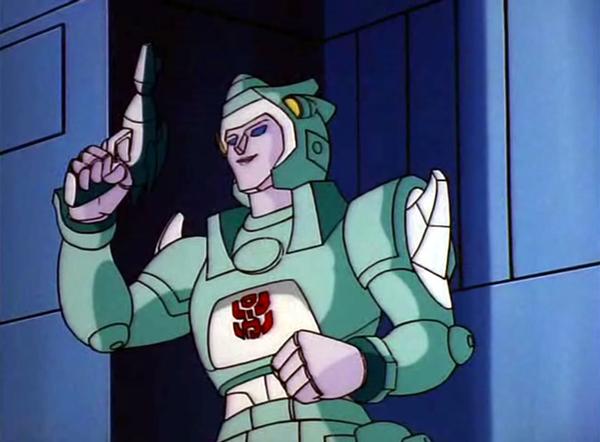
Moonracer is an Autobot who is a female that specializes in sniping. Her shooting prowess has won her a spot among the Wreckers.
Arcee
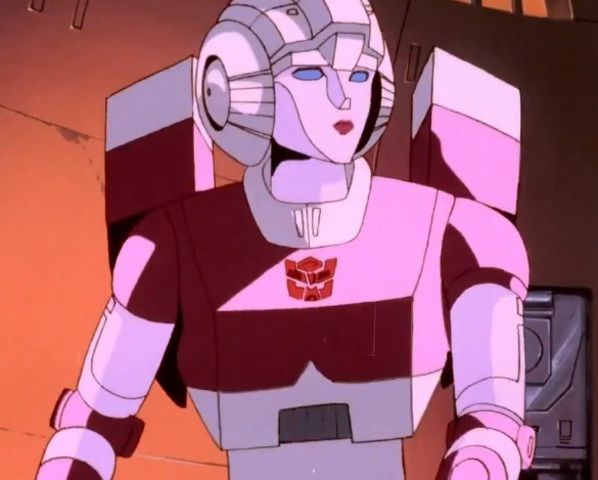
Arcee is frequently seen in the company of her pals and comrade Autobots Springer and Hot Rod, both who she adores. Arcee, the more level-headed and sensible of the three, is generally the one who has to reign in the two others when their attitudes or moods go out of hand. She may be Rattrap’s relative, in addition to being a strong warrior and skilled shooter. Arcee, despite her beauty, is among the most vicious Autobots when her companions are threatened.
In the pilot episode of the Transformers show, As the planet Cybertron’s Energon supply runs low, the Autobots leave in search of a new energy source. The Decepticons, their adversaries, follow. After a bloody intergalactic combat, both of their spacecraft crash down on Earth.
When the Autobots run out of Energon, they left their native planet of Cybertron in quest of other supplies. The Decepticons chase them down and ambush the Autobot spacecraft. The spacecraft crashes into Earth and becomes trapped within a volcano. Teletran One, which is the ship’s computer, awakens and revives them millions of years later. But the Decepticons are focused on taking advantage of Earth ‘s assets for their own gain. The Autobots are as determined to defeat them. This marks the beginning of the series.
The Decepticons aim to harvest as much energy as they can from Earth in order to return to Cybertron. The Autobots, together with their newfound human friends, attempt to stop them. The Autobots emerge from out of the rubble to help the humans. Spike and Sparkplug accompany them back to Autobot Headquarters to aid them in their fight. The Decepticons proceed to pillage Earth’s resources and create Energon cubes, intending to return to Cybertron with more than enough power to bring the Decepticons to triumph. The Autobots prepare for one final showdown to prevent the Decepticons from going back to Cybertron. Bumblebee and Sparkplug are immediately saved from some explosive material, but the Decepticons manage to blow their way out.
After months of secrecy, the Decepticons emerge with a new means for transporting Energon cubes back to Cybertron. The Autobots confront the Decepticons once again at the real site of the Space Bridge, rescuing Spike and destroying the Energon cargo. Megatron is thrown into the open Space Bridge and assumed to be destroyed as the conflict nears its climax. Starscream takes charge and commands a retreat. However, Megatron emerges intact through the Space Bridge within the Decepticon headquarters on Cybertron and pledges revenge on his adversaries.
Must Watch Episodes
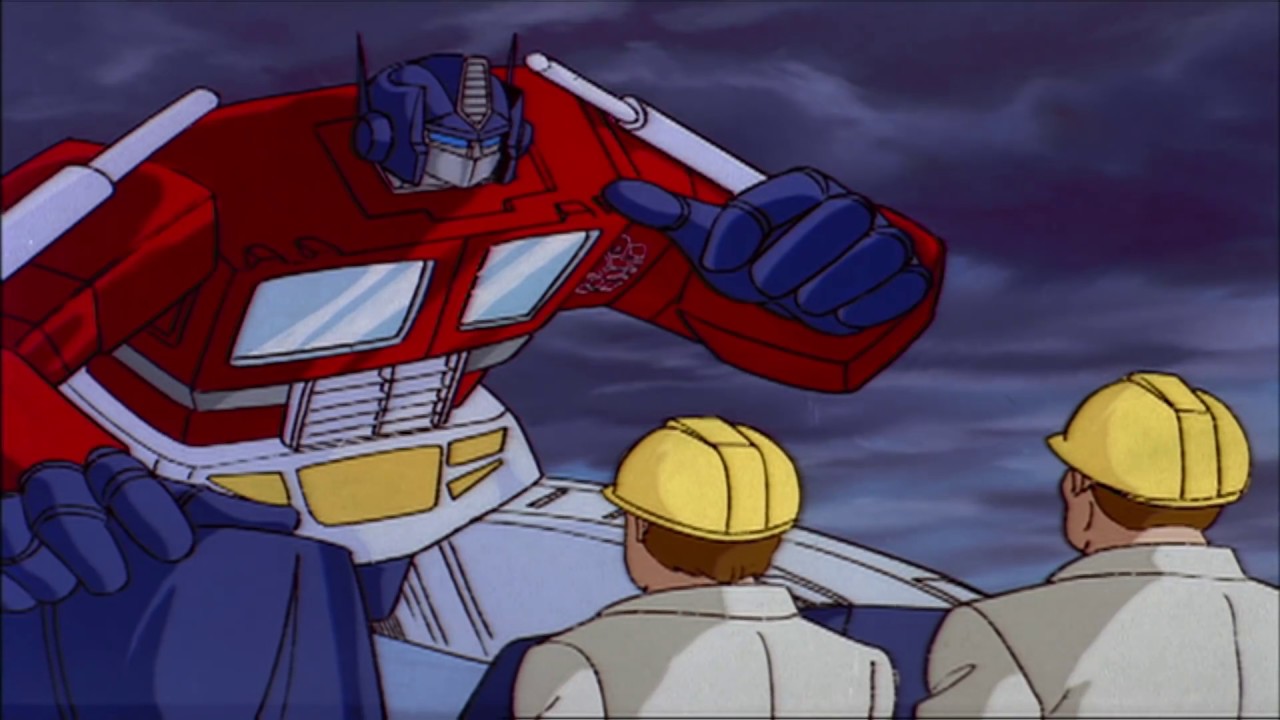
The first Transformers animated show was a true masterpiece. It catapulted the ‘Robots in Disguise’ to superstardom among 1980s kids and set the essential parts of the mythos that subsequent incarnations of the series would follow for decades to come. Despite being somewhat antiquated and somewhat unsophisticated by current criteria, the G1 Transformers program contains several great episodes that will satisfy both nostalgic aficionados and first-time viewers.
Dino-Centric- The Dinobots were a hugely popular sub group of the Transformers, so it’s no wonder that the G1 series’ dino-centric episodes were some of the most beloved. Three of the episodes, Season 1’s War of the Dinobots, S.O.S. Dinobots and Season 2’s two part episode, Desertion of the Dinobots, all have the same rating, therefore deciding which is better is a question of personal opinion. However, there was something fascinating about seeing the original three Dinobots rebel on Optimus Prime and then battle the two brand new Dinos during War of the Dinobots!
The Search for Alpha Trion- The Search for Alpha Trion includes two crucial components to Transformers mythos, further confirming the franchise’s significance. First, it acknowledges the presence of Transformers that are female, here depicted as a rebel squad of Autobots led by Elita-1. Secondly, it featured Alpha Trion, a figure who would later be shown to be pivotal in Cybertron’s history and the creation of Optimus Prime. If a spectator can enjoy the episode’s tongue-in-cheek efforts at humor, it does provide some thrilling fight sequences in addition to the insights into wider Transformers mythos.
Call of the Primitives – Call of the Primitives attempted to enhance Transformer legend by offering an origin story for the planet ruining Unicron, but the episode’s revelation that his creator was a small ape-like researcher named Primacron was supplanted by the subsequent comic book.
The concept of recruiting Transformers with wild modes to stop Primacron’s latest innovation, a creature of terrible and unstoppable power dubbed Tornedron, from draining the cosmos of energy, was intriguing enough. Seeing the Autobots work together with the Decepticons was a highlight of Season 3, in a segment with some of the series’ greatest animation.
Starscream’s Brigade- Starscream ultimately made a solid push for dominance in Season 2 segment Starscream’s Brigade after griping and complaining about being a stronger leader than Megatron. Starscream is exiled to a Pacific Island following a feud with Megatron, and he creates his own army out of leftover World War II vehicles. The segment introduces the Combaticons, the newest combiner army in Transformers canon, by imbuing them with the characteristics of renegade Decepticons imprisoned on Cybertron.
Fire in the Sky – Season 1 episode Fire in the Sky was an intriguing and overall well-written narrative that, aside from integrating Skyfire into animation continuity, offered Starscream a more human side, if such a thing is conceivable for a robot with such a vile personality. Starscream is desperate to resurrect Skyfire after discovering him buried beneath the ice cap, because he and the powerful Skyfire were scientific mates who roamed Earth together prior to the onset of the war. Fire in the Sky is a fantastic episode, with excellent characterisation, action, and narrative twists.
The Key to Vector Sigma – Part One – The unveiling of the titular super computer and also its key in The Key to Vector Sigma, ostensibly concerning the construction of vehicle-based Stunticons to help the Decepticons and airplane based Aerialbots to assist the Autobots, was a big addition to Transformers legend. Vector Sigma, along with the key, plays a significant part in the Beast Machines story as the driver driving the Headmasters as well as the resurrection of Cybertron just at series’ conclusion.
Dark Awakening – When their beloved Optimus Prime died at the half-hour mark in the much awaited Transformers: The Movie, an era of wide-eyed Transformers enthusiasts was profoundly shaken. Many tuned in to the daily show after the film eagerly expected his return, only to be shocked when he reappeared as a brainwashed revenant bent on killing the Autobots.
Heavy Metal War – The gestalts were another enormously popular sub-group of Transformers, consisting of numerous Transformers with different modes that could also come together to form a massive super-robot. Devastator, the united form of six evil Constructicons, was arguably the most renowned of these gestalts, and he made his debut in this episode.
The Return of Optimus Prime – Once the outrage over his demise impacted the bottom lines of the Transformers toy producers, it was unavoidable that Optimus Prime must return. The Return of Optimus Prime, a two-part episode, detailed his resurrection and reinstated him as the series’ preeminent heroic Autobot.
War Dawn – Megatron sends the Aerialbots back in time in an effort to eliminate them, but they wind up trapped in the Golden Age of Cybertron. They encounter a dock worker called Orion Pax and also his fiancée Ariel while disoriented, but are stopped by a newly created Megatron who goes on to plunder the dock for much needed Energon, severely injuring Ariel and Orian in the process.
Cartoon Casts
Peter Cullen (Optimus Prime)- Peter Cullen is an American and Canadian voice actor best known for his portrayal of Optimus Prime inside the Transformers franchise and the Michael Bay film series. He is also recognized for delivering the voice of the Predator in the movie released in 1987 of the same name, as well as Eeyore in the Winnie the Pooh series and Monterey Jack in Chip ‘n Dale Rescue Rangers.
Jack Angel (Ultra Magnus)- Jack Angel had been born in California, USA in Modesto on October 24, 1930. He has appeared in four films that the Library of Congress has designated as “culturally, historically, or artistically significant”: Who Framed Roger Rabbit, Toy Story, Beauty and the Beast and Shrek.
Frank Welker (Megatron)- Frank Welker grew up in the state of Colorado. He moved to California to pursue his passion and began a career as a voice actor that has lasted five decades and featured hundreds of credits. On Hanna-renowned Barbera’s Scooby Doo, Frank collaborated alongside many other well known voice actors.
Marlene Aragon (Elita One)- Marlene Aragon is an actress best known for her roles in Jem in 1985, Transformers in 1984, and also Challenge of the Superfriends in 1978.
Linda Gary (Chromia)- Linda Gary was born in Los Angeles in California on November 4, 1944. She is most recognized for her roles in The Secret of the Sword in 1985, Switch in 1991, and He-Man and She-Ra: A Christmas Special in 1985. Charles Howerton was her husband. She died in North Hollywood in California on October 5, 1995.
Susan Blu (Arcee)- Susan Blu was born in Minnesota, USA in St. Paul on July 12, 1948. She is best known for her roles in The Transformers: The Movie in 1986, The Tick in 1994, and also Friday the 13th VII: The New Blood in 1988. Since August 2013, she has been wedded to Tania Themmen. Cynthia Songé was her former partner.
An incredible toyline
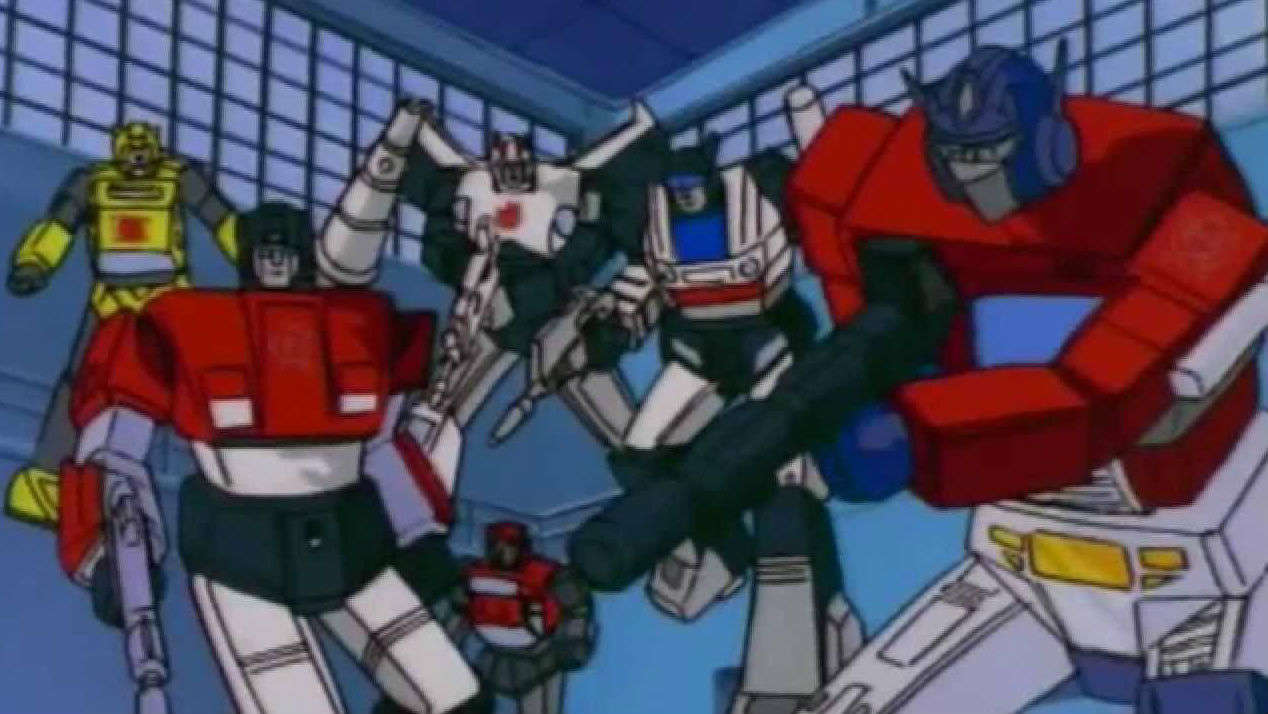
Transformers was not really a novel concept. The roots may be traced back to Takara Toys’ Diaclone toy series, which debuted in 1980.
It was a toy range that comprised morphing vehicles and robots driven by small figurines from a micro-man toy line. They released a range of car-robots that could also morph in 1982. Takara’s “car-robot” toy line was licensed by Hasbro, as was Takara’s “micro man” line. Several of the Autobot Transformers were derived directly from the car-robot series. Many of the future Transformers were already available as Takara toys.
In 1983, Hasbro executives went to the Tokyo Toy Show in search of new toys to bring to North America. They would acquire the rights as well as the molds for all 28 Diaclone figurines.
Hasbro had the intelligence to realize that just releasing a new toy line was not the best strategy. Giving the toys backstories and character profiles gave them a sense of individuality that youngsters could relate to. A morphing robot is great, but it becomes much more fascinating when you discover they are a technological race from the planet Cybertron, and they are made up of both good and bad robots.
Many Transformers toys would be released over the years or even decades, the ones that debuted in the mid-1980s tied into the show and the original film. The initial Transformers release includes a large number of toys, 28 in all; 18 Autobots and 10 Decepticons. Eleven Autobots would morph into automobiles, six into tiny cars, and one of them into a tractor trailer – Optimus Prime, of course. Three Decepticons would transform into planes, one into a tape player, five into numerous cassettes, and one into a weapon. Though it appears to be a large toy line, they pulled them from the initial Diaclone series, and most are duplicates of one another. The paint and accessories would be changed, but the actual procedures to transform the toy would remain the same.
All of the models from the very first set were republished in the second series, along with twenty-six additional toys. This is when the branding became considerably more sophisticated, and subgroups were established. The Autobots have the Dinobots and the Omnibots, whereas the Decepticons have the Constructicons and Insecticons.
Along with these new enhancements, Hasbro would include features such as heat sensitive rub marks on the reissued toys. When you rubbed the little decals, the heat revealed perhaps an Autobot or a Decepticon insignia. It appears to be a fascinating new play feature, but it was done to disclose authentication against many of the poorer bootleg copies that were suddenly flooding the market.
Both releases occurred in 1984 and 1985, but were regarded as a single massive event. The two programs, as well as all of the characters, would comprise the first generation of Transformers for the animated series. Everything released during this time period would serve as the foundation for the Transformers world.
Interesting Facts About the Cartoon

Even though the show is so popular, there is a lot of trivia about the show that many may be unaware of. Hasbro first rejected the name Megatron because it was too frightening. Bob Budiansky, one of the writers responsible for naming the characters, stated that as a villain, he was supposed to be frightening. Optimus Prime never was supposed to come back to the show after the film, but a popular uproar startled the creators, and he did.
When Optimus Prime enters robot mode, the trailer travels backward and vanishes from view, while just the cab turns into the robot body; and when he enters vehicle mode, the body turns into the cab, and his trailer emerges from nowhere and links to the cab. Many fans have pondered what happened to the trailer in the course of the transitions, but no answer has ever been provided.
Because both Bluestreak and Prowl transformed into Datsun sports cars and had helmets which had “devil’s horn” crowns, the animators attempted to prevent misunderstanding by deleting Prowl’s shoulder-mounted rocket launchers, which were included with the toy Prowl. However, every now and again, animators would mistakenly paint Prowl blue just like Bluestreak. Early treatments dubbed Bumblebee “Goldbug.” His name was changed to Goldbug when he was rebuilt in the third season.
Marissa Faireborn, a character from the GI Joe animation, is also modeled on a Hasbro and Marvel comic. In one episode, Marissa chats with her father, who is played by Bill Ratner, who also gave the voice for Flint on the GI Joe cartoon, whose true name is Dashiell Faireborn. So Marissa is Flint’s GI Joe’s daughter, probably via Lady Jaye.
The malevolent organization of animal-based Transformers known as the Predacons began as a friendly troop of Autobots known as “Anibots.” Instead of Predaking, their united form was going to be dubbed “Dragon Beast.” They were supposed to confront Devastator in The Transformers: The Movie (1986), but after multiple screenplay rewrites, wherein the Anibots had become the Predacons, they were written out of the tale and appeared later in the cartoon’s season 3.
Bob Budiansky, who’d been tasked by Hasbro with naming the toys given to him in order to help develop the tale for the Transformers brand, offered his characters various names in order to adapt them as a kind of choice. In the instance of Starscream, who had a silver jet when in vehicle form, one of Budiansky’s possible titles for his character was ‘The Silver Snake.’ Though this moniker was never utilized, it is worth noting that the persona of Starscream in the classic G1 series was played by comedic character actor Chris Latta.
Chris also provided the voice of Cobra Commander in yet another famous cartoon of the period, ‘G.i.Joe.’ Chris’s voice for both characters was identical, and they were the two main characters Chris was best recognized for. In addition to being the leader of a “Snake”-named group, the persona of Cobra Commander was frequently seen wearing a legendary “Silver” facial plate that covered up his identity, which was disclosed in the ‘G.i. Joe The Movie’ in 1986 as somehow being partly snake-like in form due to a scientific accident, making him something of a ‘Silver Snake’ in appearance.
Other forms of media
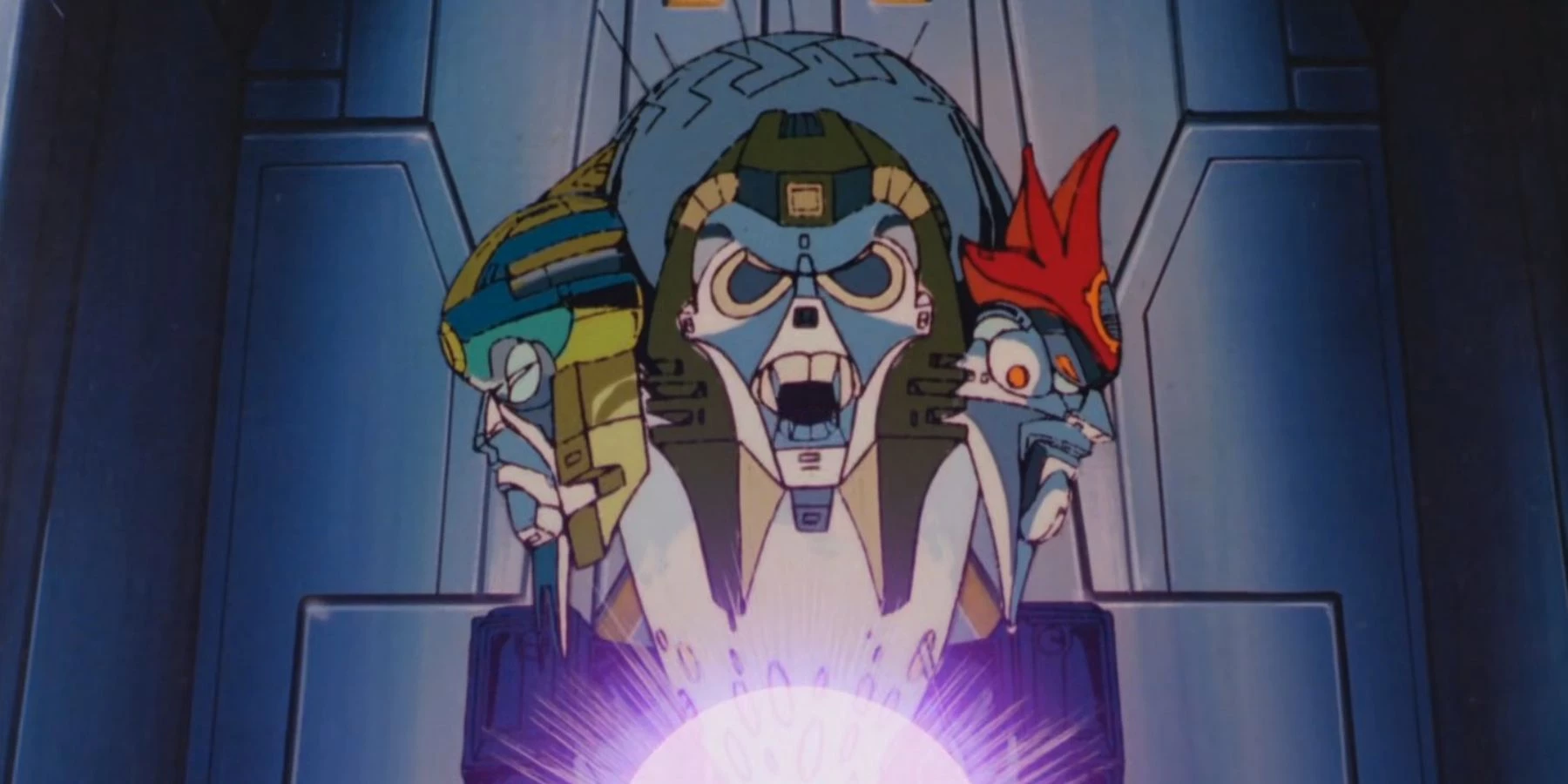
Four-Issue Limited Series- While Editor Bob Budiansky did not write the first four-issue miniseries, which was released months before the show, he went on to write the remainder of the comic, penning stories such as the Dinobots against Shockwave in the Savage Land.
While the program was episodic, Budiansky and his team of illustrators, including Frank Springer and also colorist Nel Yomtov, had a continuous tale that naturally introduced new figures and took unexpected turns, such as Grimlock being King of the Autobots. Budiansky eventually bowed out and proposed Simon Furman replace him. This was a no brainer considering that Furman was the primary author of what is maybe the most obscure-yet-loved G1 canon of all time.
The British Transformers Comics- By the 80s, Marvel’s UK subsidiary was publishing weekly comics that were mostly reprints of US storylines. Transformers will be no exception, appearing as the primary feature inside a weekly full-color publication, slicing an American narrative in half to fit two issues. Even with the stories divided, demand soon outstripped supply.
Marvel UK’s answer was to commission fresh tales to fill the voids. These dark and intricate stories, including time travel and mutilation, were mostly written by Furman, with artwork by Geoff Senior and Andrew Wildman. DIE creator Kieron Gillen recently found himself unwittingly curating a Twitter discussion on exactly how horrifying the UK series was.
The IDW Comics- IDW, which was little obscure at the time, acquired the Transformers franchise in 2005. Furman assisted in expanding the new canon through numerous interwoven miniseries, beginning with both sides working in secret on Earth rather than crash-landing. The plot expanded to include a Decepticon invasion of Earth, the incorporation of other Hasbro brands such as G.I. Joe and also ROM: Space Knight to form a “Hasbro Universe,” and, astonishingly, the conclusion of the Autobot-Decepticon War in 2012. The whole Hasbro Universe was relaunched with the Transformers Unicron event in 2018. At the moment, IDW is releasing a monthly Transformers book set before the battle, as well as the Transformers Galaxies anthology.
In Japan- While the original animation finished with a three-part finale in the United States, Japan ignored this and instead developed a series of successor series beginning with The Headmasters in 1987. They all had tie-in manga, but they were all quite distinct, as is the case with any original animation that gets a graphic novel adaptation. Fight! is one of the new series gathered in The Transformers: The Manga Vol. 1.
Super Robot Lifeform Transformers, a collection of short stories in which the Autobots help and support a boy named Kenji and The Story of the Super Robot Lifeform Transformers, which is , set during the third season of the G1 cartoon without Kenji, and The Great Transformers War, which led directly into the Headmasters anime. Kaneda’s writings reflect the sense of vintage tokusatsu episodes, while Magami’s artwork is on model. It’s an unusual combination that makes for an interesting take on the transforming robots.
The Future for Transformers?
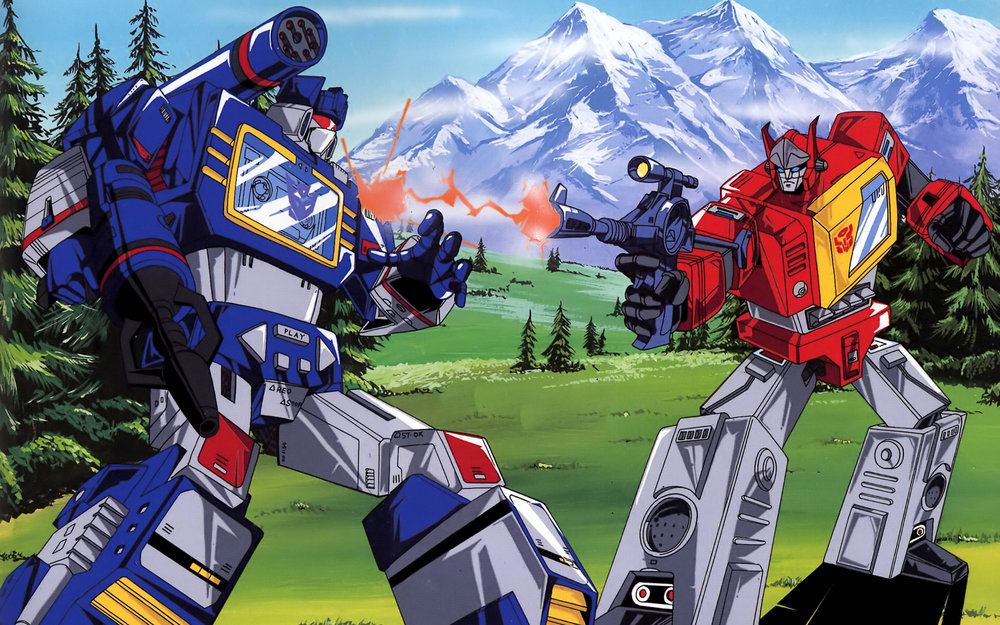
IDW Publishing will suffer a major setback when their Transformers franchise license expires at the end of 2022. Aside from reports that creator Robert Kirkman is keen on acquiring the license to Transformers together with G.I. Joe, that IDW is also losing for his business Skybound Entertainment, there wasn’t too much discussion about who will obtain the rights. Having said that, it would be intriguing if the Transformers ended up at Marvel Comics.
The Robots in Disguise originally appeared in print in 1984, with their first series lasting for 80 issues. There’s no assurance that now the House of Ideas would reclaim the rights in the foreseeable future, but having Marvel own Transformers would have a number of advantages.
The biggest advantage of Marvel regaining control of the Transformers would be seeing everyone’s beloved Cybertronians interact with the Marvel Universe’s top heroes and villains. Bringing the universe of the Transformers through into main Marvel chronology would undoubtedly raise its own set of challenges, but if done well, the possibilities are endless.
Previous collaborations between the Transformers as well as the Marvel Universe merely touched the surface of what such a combo might provide. Seeing the Hulk battle toe-to-toe against Grimlock or seeing Starscream as a part of the Thunderbolts are really just a few of the intriguing possibilities that may emerge if Marvel’s outstanding writers and artists handle the characters correctly.
Despite its highs and lows, Transformers was a large part of the 1980s and a large part of everyone’s upbringing. There really is no other gift that sparked such enthusiasm in youngsters all across the world, as well as those who followed the cartoon program faithfully.
As previously said, G.I Joe was indeed a close contender, and He-Man rounded out the big three, but nothing caught children’s imaginations like Transformers. To everyone, it’s the toy that a child doesn’t even realize they desire. It combines all of the aspects of technology, machinery, automobiles, aircraft, action, and a fantastic backstory to create something which is unmistakably 1980s.
